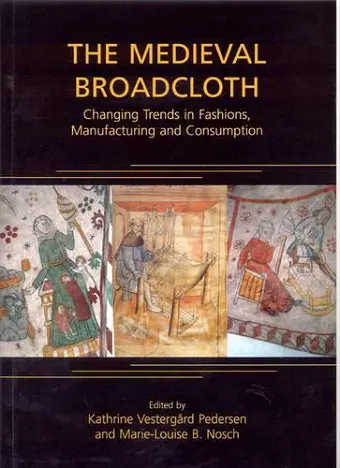The Medieval Broadcloth
Changing Trends in Fashions, Manufacturing and Consumption
Marie-Louise Nosch author Kathrine Vestergard Pedersen author
Format:Paperback
Publisher:Oxbow Books
Published:19th Nov '09
Currently unavailable, our supplier has not provided us a restock date

The eight papers presented here provide a useful introduction to medieval broadcloth, and an up-to-date synthesis of current research. The word broadcloth is nowadays used as an overall term for the woven textiles mass-produced and exported all over Europe. It was first produced in Flanders as a luxurious cloth from the 11th century and throughout the medieval period. Broadcloth is the English term, Laken in Flemish, Tuch in German, Drap in French, Klæde in the Scandinavian languages and Verka in Finish. As the concept of broadcloth has deriving from the written sources it cannot directly be identified in the archaeological textiles and therefore the topic of medieval broadcloth is very suitable as an interdisciplinary theme. The first chapter (John Munro) presents an introduction to the subject and takes the reader through the manufacturing and economic importance of the medieval broadcloth as a luxury item. Chapter two (Carsten Jahnke) describes trade in the Baltic Sea area, detailing production standards, shipping and prices. Chapters three, four and five (Heini Kirjavainen, Riina Rammo and Jerzy Maik) deal with archaeological textiles excavated in the Baltic, Finland and Poland. Chapters six and seven (Camilla Luise Dahl and Kathrine Vestergård Pedersen) concern the problems of combining the terminology from the written sources with archaeological textiles. The last chapter reports on an ongoing reconstruction project; at the open air museum in Eindhoven, Holland, Anton Reurink has tried to recreate a medieval broadcloth based on written and historical sources. During the last few years he has reconstructed the tool for preparing and spinning wool, and a group of spinners has produced a yarn of the right quality. He subsequently wove approximately 20 metres of cloth and conducted the first experiment with foot-fulling.
An important contribution.' -- Medieval Clothing and Textiles, vol 6 Medieval Clothing and Textiles, vol 6 Copious tables and illustrations throughout the book enhance its readability considerably, as do the contributor biographies that help to place the subject matter of each paper in its academic context. This is a fine book, one which clearly illustrates how archaeology can complement written sources and how those sources can enhance the archaeology.' -- Medieval Archaeology Medieval Archaeology haeology ...this volume would compliment the library of a textile subject expert both as an English language reference to Baltic regional research and as a directional map for developing future large-scale research projects of a truly interdisciplinary nature.' -- Archaeological Review from Cambridge Archaeological Review from Cambridge
ISBN: 9781842173817
Dimensions: unknown
Weight: unknown
172 pages